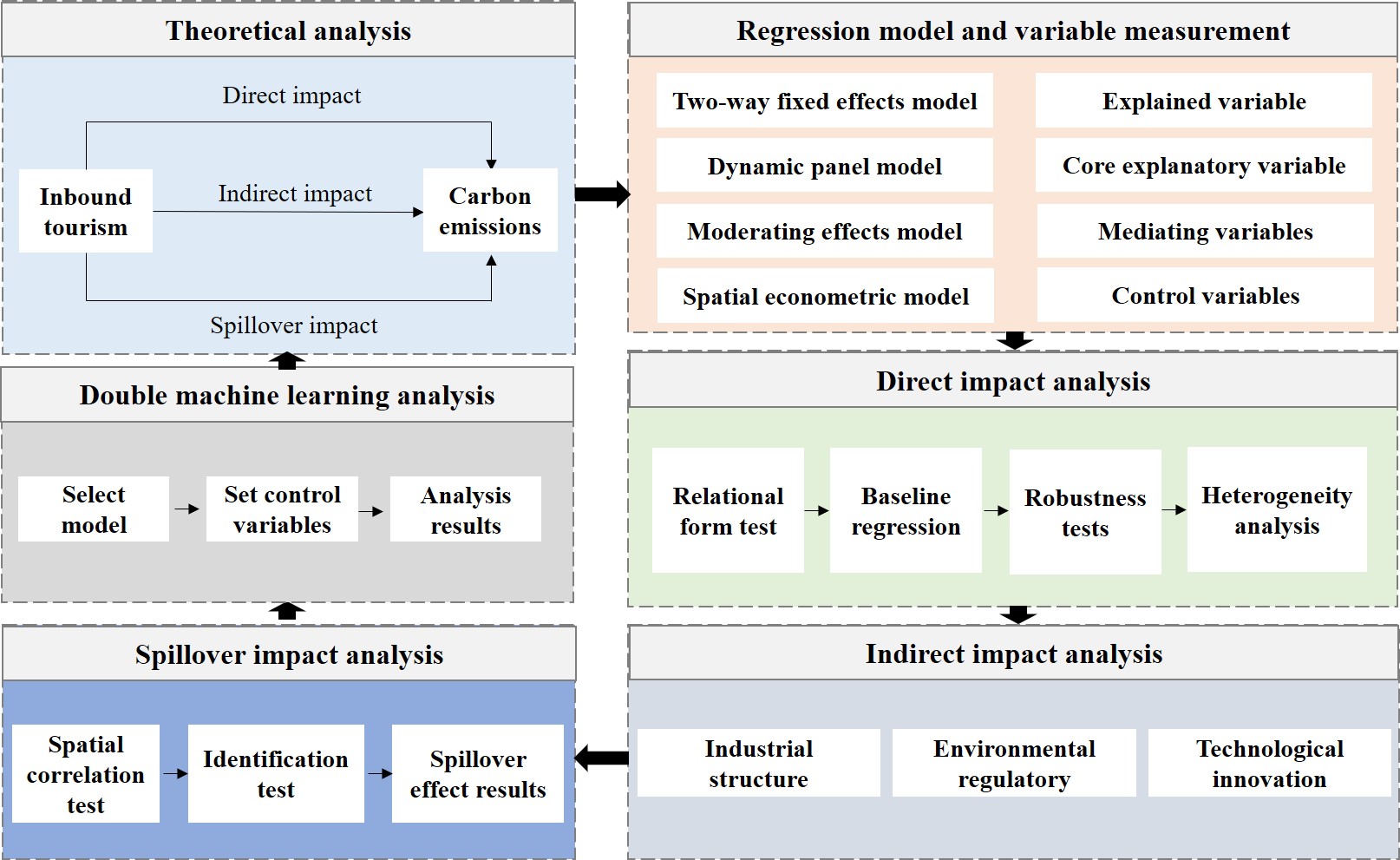
As an important vehicle for implementing the Belt and Road Initiative (BRI), inbound tourism not only promotes economic growth among participating countries but also plays a significant role in optimizing the flow of production factors and enhancing green low-carbon cooperation. Based on the panel data encompassing 66 countries along the BRI from 2009 to 2019, we use the two-way fixed effects model, dynamic panel model, panel threshold model, instrumental variable model, moderating effects model, spatial econometric model, and double machine learning model to investigate the nonlinear impact, mediating mechanism, and spatial spillover effect of inbound tourism on carbon emissions. Results indicate that the development of inbound tourism has an inverse U-shaped nonlinear influence on carbon emissions, and this influence remains credible after robustness testing and endogenous control. Moreover, this effect varies significantly across countries with different geographical conditions and economic development levels. Mechanism analysis indicates that inbound tourism can reduce carbon emissions by upgrading industrial structure, enhancing environmental regulatory, and fostering technological innovation. The application of spatial durbin model reveals the spatial spillover effect of inbound tourism on carbon emissions of neighboring countries. Based on the above conclusions, this paper argues that it is necessary to consider the differences in economic development stages and location characteristics among countries, formulate targeted tourism development policy systems, and establish a cross-border collaborative governance framework for tourism-related carbon emissions. This will promote the synergistic advancement of high-quality tourism economic development and low-carbon emission reduction in the BRI countries.
Total file downloads: 51